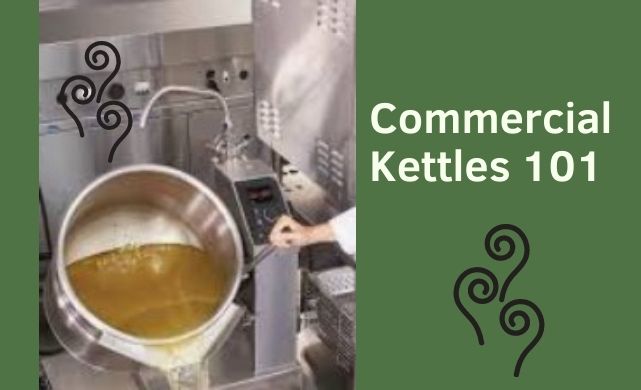A steam kettle functions much like a braising pan or tilt skillet. A large vessel, is heated indirectly with steam, heating the kettle thoroughly, yet because it is indirectly heated, you avoid hot spots and scorching. A steam kettle is like having a self-contained, dedicated stock pot for and can be used for tasks like heating sauces and soups or more delicate foods like chocolate. The pressure of the steam determines the heating capacity of the pot and this function can be partially or fully automated.
Are you considering adding a steam kettle to your operation? Let’s review the options available to you to help you in your quest to find the best fitting commercial cooking equipment for your kitchen.
Size – Commercial kettles can be as small as 5-gallons and as large as 150 gallons in capacity. The variety of sizes is there to accommodate nearly any need. To determine the best sized kettle for your foodservice operation, you need to consider the size of the batches of food your preparing and the frequency that these batches of food will be prepared. A kettle must be capable of preparing the volume of food that your operation requires, but if cooking is infrequent, you can prepare multiple small batches of food to reach the desired volume of food. A smaller kettle will be less costly to operate and will provide quality production. An infrequently used oversized kettle will be costly and take up valuable floor space.
Jacket – the jacket of a steam kettle is what contains the pressurized steam that surrounds the kettle. Some models of kettles have a full jacket which extends to cover the entirety of the kettle while traditional kettles will have a 2/3 jacket. With the traditional kettles, the unjacketed part of the kettle allows for a spout to simplify pouring. When you get into larger operations with very large fully jacketed kettles, there will often be a spout at the bottom of the kettle to aid in easy draining.
Gas or electric? You will need to select a kettle that works with the utilities you have available to you in your kitchen. However, gas kettles typically work well in larger operations where the kettles are stationary. Electric kettles are often smaller kettles or kettles that may be mobile.
Stationary vs Tilting? Smaller kettles will be tilting kettles with a spout for pouring out the contents. A tilting kettle option is not practical when you get into the larger sized kettles with often have a spout at the bottom. Keep in mind that what ever you choose, you need to be sure that anything you prepare can be removed from the kettle so you don’t want to be making chunky foods like rough stews, etc. and trying to drain them through a spout on the bottom of a kettle which may easily get clogged.
The steam kettle is a staple in large institutions but is also a good option in smaller commercial kitchens when applicable. Kettles can be used to prepare soups and stews, but also large batches of coffee, eggs, and other foods and beverages.
